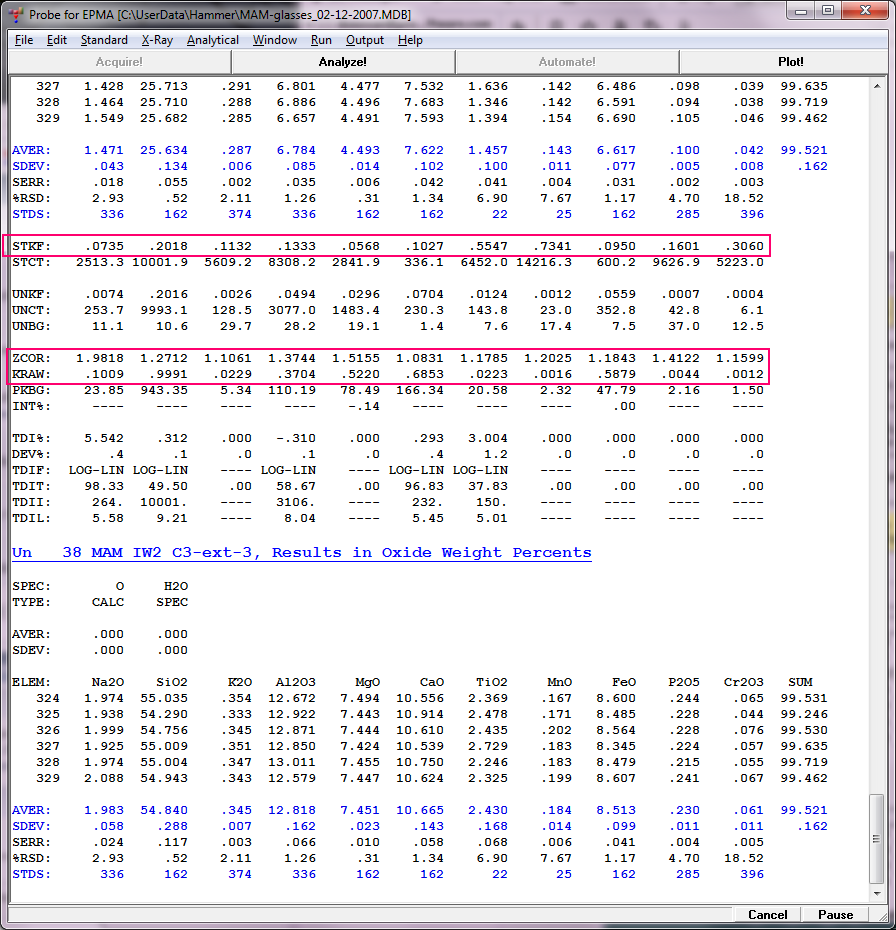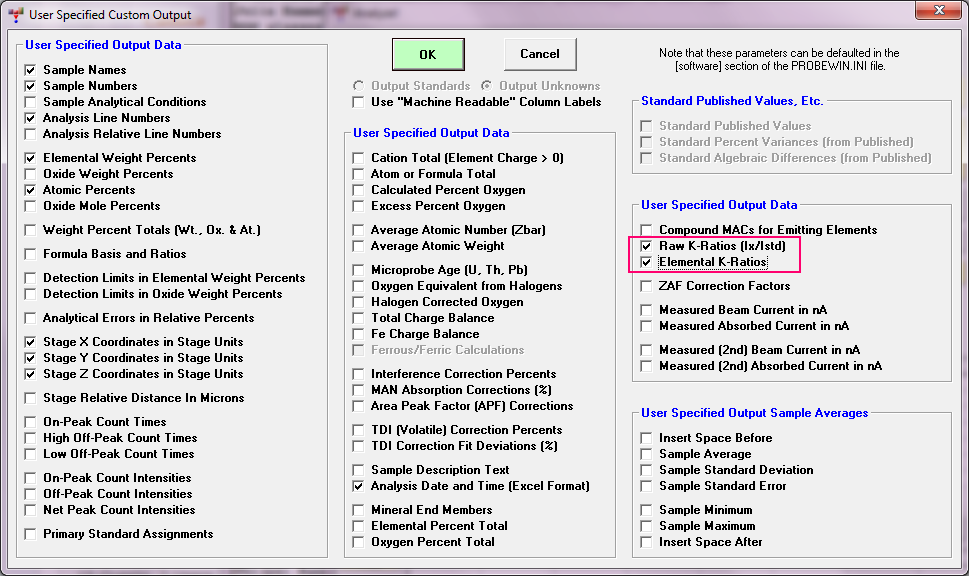I posted a short "primer" on the differences between the "raw" k-ratio and the "elemental" k-ratio with some examples from the output from CalcZAF here:
https://probesoftware.com/smf/index.php?topic=239.msg9467#msg9467This post will show similar output types as seen in the Probe for EPMA software. Let's start first with the quant output in the log window as seen here:

The first thing to note is the line labeled "KRAW:", which is again, the deadtime, beam drift, count time and background corrected intensity ratio from the unknown sample divided by the standard sample. In the CalcZAF link above, this is essentially the same as the column labeled "K-RAW" in the CalcZAF output.
However, in Probe for EPMA, this "raw" k-ratio also includes other corrections to the intensities such as the spectral interference correction (and time-dependent intensity (TDI) corrections for beam sensitive samples). The idea being that this (corrected) "raw" k-ratio can then be input into other applications, e.g., thin film re-processing software such as STRATAGem and BadgerFilm for quantification of thin film geometry samples and the data will already be corrected for spectral interference and ion migration effects!

The next thing to note is the line labeled "STKF:", which is the standard k-factor values for each element in its primary standard. The standard k-factor is basically the correction required for the primary standard, if the standard is *not* a pure element (see the above link to the CalcZAF topic and the PFE glossary embedded images for more details). In the CalcZAF output, this is the column labeled "STDKFAC" near the top of the last embedded image in the link above.
Finally we can note the "ZCOR:" line in the Probe for EPMA output, which is the matrix correction for the unknown sample, again remembering that this value applies to both ZAF and pr(z) matrix corrections (when using alpha factors for quantification, this line would be labeled "BETA:" for the so called "beta" factor).
Now what about the so called "elemental" k-ratio in Probe for EPMA? Well, it's not displayed normally in the log window output (though turn on DebugMode from the Output menu and you'll see the elemental k-ratio, a la CalcZAF, along with a host of other parameters for your EPMA enjoyment), but you can obtain both the "raw" k-ratio and the "elemental" k-ratio from your Probe for EPMA data by using various other export options such as the "User Specified Output Format" option shown here:

For more details on the user specified output format see this link (it is also accessible from the Output menu):
https://probesoftware.com/smf/index.php?topic=8.msg427#msg427Let me know if anyone has any questions... Hey, I have a question: what does the "ZAF Factor" that is output in the JEOL software represent?
https://probesoftware.com/smf/index.php?topic=508.msg9255#msg9255Neither Brian Joy nor I can figure it out!